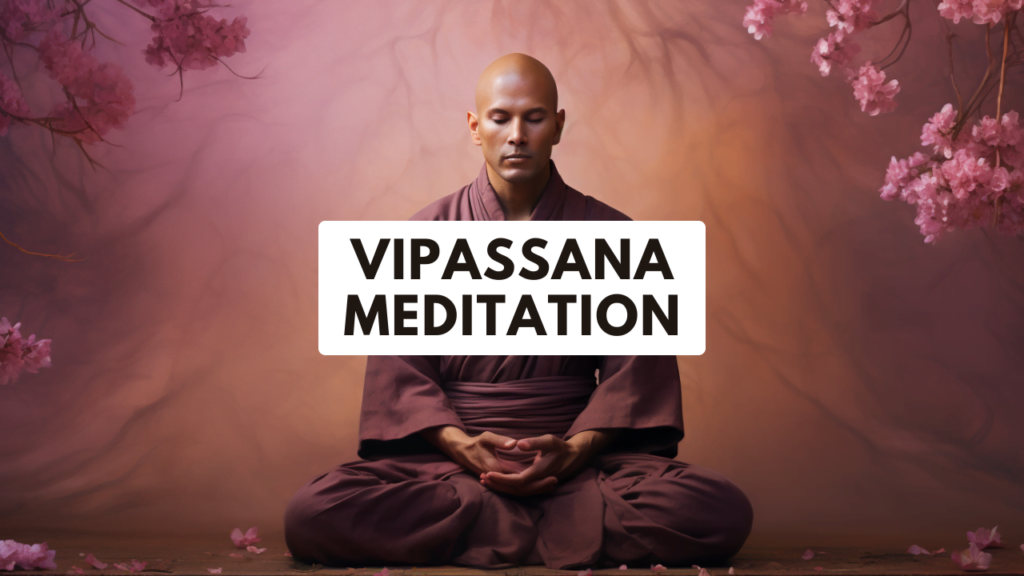The greatest and oldest meditation technique for spiritual growth is vipassana meditation. The serious spiritual seeker will want to learn how to practice this type of meditation.
What Is Vipassana Meditation?
Vipassana meditation is a type of meditation developed specifically for spiritual progress and attaining spiritual insights. The word “vipassana” means “to see things as they really are”.
A habit of vipassana meditation will certainly cause spiritual awakening if practiced consistently.
The practice aims to purify the meditators mind and create a state of pure unattached awareness. It is in this state that you see reality clearly for what it really is.
How To Meditate For Spiritual Awakening
Origins of Vipassana
Vipassana was one of the main types of meditation that Buddha taught back in 500 BCE. This type of meditation is the predecessor for both modern day vipassana and mindfulness meditation.
Buddha found vipassana to be one of the most helpful practices on his journey towards enlightenment, which is why it became one of his core teachings.
How To Do Vipassana Meditation
Vipassana is based in the same principles that mindfulness meditation is, however the focus shifts in vipassana. There are few subtle changes we need to make to our regular meditation practice for it to become vipassana.
1. Find A Comfortable Location
Like usual, find a comfortable place to meditate. This should be a place where you can sit comfortable for 15-30 minutes without distraction.
Ideally, a quiet location by yourself is best.
2. Get In Position
Unlike other types of meditation, Vipassana requires your back to be straight. Keeping your back upright is important for maintaining alertness.
Any position that is comfortable and keeps you fully alert and aware will work. Laying down is not recommended, but isn’t prohibited for vipassana meditation.
3. Focus On The Breath
The main focal point for vipassana meditation is the breath. For the duration of your meditation continue to come back to your breath to refocus your awareness.
Notice the rise and fall of your chest and the feeling of air coming into and out of your lungs. Anytime a thought enters your mind or you become distracted, simply return to the breath.
Through the practice of continually focusing on the breath your mind will calm and purify.
4. Notice Sensations and Feelings
Once your mind begins to relax and enter a state of more pure awareness from focusing on your breath you may begin to notice bodily sensations and feelings.
Perhaps you can feel tingling, numbness, or vibration sensations. Your job is to watch how these sensations appear and disappear without judgement or attachment.
Become the observer of those sensations.
5. Practice Nonattachment Always
A key difference with vipassana meditation is its focus on nonattachment. Anything that arises in your awareness is simply to noticed and observed. Do not attempt to hold onto or push away any sensation.
Have the attitude of allowing any and all sensations to exist, appear, and disappear. With nonattached observation you will begin to enter into a pure state of consciousness over time.
If you find yourself judging or labeling feelings or sensations as “good” or “bad” just notice those thoughts in a nonattached way. Continually come back to a state of open nonjudging awareness.
Mindfulness vs. Vipassana
Mindfulness meditation and Vipassana meditation operate in very similar ways. They become different in their intentions and desired outcomes. This subtle difference in approach makes all the difference.
Mindfulness meditation focuses your awareness and calms the mind for the purpose of stress reduction and mental improvement.
Vipassana meditation focuses your awareness for the purpose of awakening and attaining spiritual insights.
Though the process of each is very similar, their outcomes are different. Vipassana meditation tends to be a little more strict when it comes to posture and nonattachment to what arises. Mindfulness meditation is much more lenient and can be practiced in a less serious way.
Hi, I’m Ryan. I’m a meditation teacher, spiritual seeker, and founder of nurtureyourspirit.org. I’m glad you’re here! I founded Nurture Your Spirit because of my love of meditation, spirituality, and spiritual awakening.





